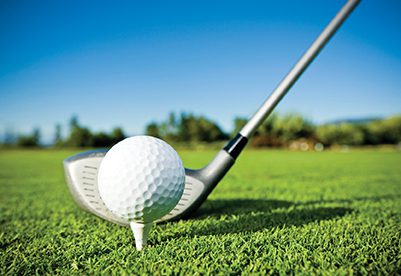OK, scratch golfer, are you ready for the future? There are machines that use radar to detect exactly how closed your clubface is when you hook the ball. They can generate your swing on a computer screen and allow you to pick apart your flaws. These machines will humble you. They will complicate you. However, they will make you better.
Golf 2.0 can bring out the best and the worst in a golfer. Golfers and instructors can spend tens of thousands of dollars on space-aged gadgetry to get the most out of their game. It can bring out a level of obsessiveness where you can video-replay your day on the range and sort through spreadsheets of numbers about your ball flight that would intimidate an accountant.
Southwest Florida isn’t exactly known as a hub of advanced technology. But when it comes to making golfers better, the Gulfshore has the digital means to up your game. The choice is: How do you use them?
Know more than you’ve ever wanted with TrackMan
Mark Durland pulls the flat, rectangular box with an orange face out of his backpack and hits a button. A soft whirl emanates and the box develops two legs. He stands it up. That’s it. The TrackMan 4. It’s a $25,000 piece of equipment (he got it at a steep discount, by the way) that is perhaps the most accurate way to analyze your swing.
The TrackMan box uses radar to get data on how a golfer strikes the ball. The instructor then can see, in precise detail, a series of 26 data points—club speed, ball speed, face angle, club path, etc.
 |
|
The TrackMan system measures with precise detail how you're hitting the ball. |
Aside from making Moneyball devotees salivate, the device has changed how teachers teach and how the pros practice over the past decade. Tiger Woods has even preached its prowess.
For Durland, of the Durland Golf School at the Naples Grande Golf Club, it boils down to one thing: “It takes the guessing out of it.”
Too many times he’s been in situations where it becomes his word against the feel of the golfer. No matter how credentialed the instructor, sometimes if the feel isn’t right, the student won’t take the advice. Now, Durland can go to the tape (or, rather, high-res image) and show the exact numbers. Oh, the student thinks, I am opening my clubface—by 2.7 degrees. Durland can take them—degree by degree, at times—to getting that number closer to zero. Then, he or she can feel the difference.
Durland keeps all this data—essentially every session with every client—and can pull it up on his laptop on command. He finds the file on one client—a middle-aged man who had a problem hooking the ball. The client had gotten to the point where he was so frustrated he was considering quitting (trust us, pros hear this a lot and take it as a challenge). The TrackMan with just one swing captured the problem. Little by little, he and Durland brought the swing back to normal. Eventually, the client corrected his problem—and was picking up another 70 yards on his drive.
“Before, it would have taken months to correct that,” Durland says. “Now, it essentially took two sessions.”
Swing in 4-D
 One of the bigger developments in golf tech is just a small set of sensors that essentially look like poker chips. They’ll be stuck on the golfer. What they will produce is a 3-D image of the golfer on a computer screen.
One of the bigger developments in golf tech is just a small set of sensors that essentially look like poker chips. They’ll be stuck on the golfer. What they will produce is a 3-D image of the golfer on a computer screen.
A 2-D image can be misleading—creating flaws where there aren’t any or hiding other problems. The 3-D image can now look at a golfer from any angle. The 4D Motion sensors attach to your wrists, elbows, knees, chest and head and wirelessly transmit information. Within a short time, you’re staring at yourself in 3-D.
Durland ordered a set just about as soon as he heard about it and was anxiously waiting for the delivery as he talked up his other technology. The main advantage is that it opens up a whole new world on the course.
Technology like 4D Motion is getting smaller and more portable, meaning it can be used in real-life situations. It’s one thing to be with a coach on the driving range. It’s another when you’re looking down the fairway with a lake on the left and sand traps on the right. This will give players and pros the data needed to analyze their in-play game. “What do we do when we’re under pressure? We can see how we change from the driving range to the course,” Durland says.
Cameras, cameras and more cameras
Pros like Durland still use video to the best of its capability. He frequently films shots on his smartphone and plays them back in super-slow motion. But, like any flat image, it’s use is only so good. So, instead of one camera, why not try four? Longtime pro Jim “Doc” Suttie, who was named the National PGA Teacher of the Year in 2000, uses a four-camera system at TwinEagles Golf Club. The cameras capture everything you’d need to know about your swing. Suttie can then replay it to find tweaks and imperfections. And, almost as important, see what you’re doing right. Sometimes, you just know you’ve hit it right. But you can’t capture a feeling and play it. You need an image to associate with a feeling. “We just want people to repeat what they do well,” he says.
To help in that pursuit, Suttie has also developed a distance-learning program, so to say. He uses the V1 software app to give online lessons. Clients download the V1 app to their computer or smartphone and video their swing. Suttie can then see it through the program and offer pointers.
Check out the latest and greatest golf gear here.
At this point, Suttie has basically seen it all. He started to coach college golf teams in 1974. He has advanced degrees in kinesiology; his doctorate focused on the biomechanics of golf swings. He’s taught privately for decades.
He’s seen fads come and go, declarations from companies about clubs or techniques that can improve your game by leaps and bounds and yards and strokes. He knows all the latest tech trends, has had golfers stand on sensor pads that analyze balance or had their putts tracked with ultrasound. But he knows the limitations of advanced science. “I do think we overuse technology,” he says. “Most people just want a good ball flight.”
Technology can make a golfer better. It can also confuse the heck out of a golfer. Suttie tends to collect the information he gets from technology and boil it down to what simple things can be applied to each person. Let the pro think about the numbers. Let the players think about a sunny day, a slight breeze and 400 yards of greenery in front of them.
The future is here. But it doesn’t have to look too different from the past.





